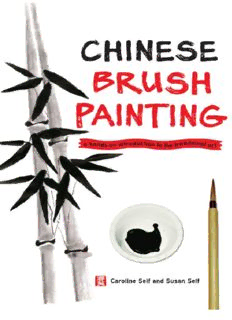
Chinese Brush Painting: A Hands-On Introduction to the Traditional Art PDF
Preview Chinese Brush Painting: A Hands-On Introduction to the Traditional Art
Published by Tuttle Publishing, an imprint of Periplus Editions (HK) Ltd., with editorial offices at 364 Innovation Drive, North Clarendon, Vermont 05759 U.S.A. Copyright © 2007 Caroline Self and Susan Self All rights reserved. No part of this publication may be reproduced or utilized in any form or by any means, electronic or mechanical, including photocopying, recording, or by any information storage and retrieval system, without prior written permission from the publisher. Library of Congress Cataloging-in Publication Data Self, Caroline, 1919- Chinese brush painting / Caroline Self and Susan Self—1st ed. p. cm. Includes bibliographical references. ISBN: 978-1-4629-0709-0 (ebook) 1. Ink painting, Chinese—Technique. I. Self, Susan, 1949- II. Title. ND2068.S45 2007 451.4'251—dc22 2006037838 Distributed by North America, Latin America & Europe Tuttle Publishing 364 Innovation Drive North Clarendon, VT 05759-9436 U.S.A. Tel: 1 (802) 773-8930 Fax: 1 (802) 773-6993 [email protected] www.tuttlepublishing.com Asia Pacific Berkeley Books Pte. Ltd. 61 Tai Seng Avenue, #02-12 Singapore 534167 Tel: (65) 6280-1330 Fax: (65) 6280-6290 [email protected] www.periplus.com First edition 11 10 09 08 10 9 8 7 6 5 4 3 2 Printed in Singapore TUTTLE PUBLISHING® is a registered trademark of Tuttle Publishing, a division of Periplus Editions (HK) Ltd This book is dedicated to all the children in the world who would like to develop new skills using the brush. Acknowledgments We thank Sherry Kendrick for her advice and especially her help in doing calligraphy. Thanks to the Barbara Bauer Literary Agency for all their help. Contents How to Use This Book 5 The Roots of Chinese Painting 6 Getting Started 12 Learning Calligraphy 22 Painting Orchid 30 Painting Bamboo 36 Painting Pine 44 Designs with Insects and Birds 51 Painting Landscape 55 Mounting Your Paintings 61 Do You Remember? 63 Books on Painting 64 How to Use This Book This book is for kids at least seven years old, teens, and adults—- anyone who wants to learn about the traditional Chinese way to write words and make paintings. You can read about and make the paintings on your own, or you can read the book with a parent or teacher, a brother, sister, or friend, and talk about what to do and why. Someone who knows about painting can be a big help. This book shows you how to hold the brush Chinese-style and make the basic brushstrokes. You will learn to write some words and numbers in Chinese. Then you will learn how to use the same basic brushstrokes to create pictures of classic Chinese subjects, including orchids, bamboo, pine trees, and landscapes. This book explains how Chinese artists think about these subjects and what principles and traditions they follow in painting them. After you copy some examples and understand the principles, you can make your own designs. When you have completed some paintings, you can choose from several suggested ways to mount them for display. You may wonder why the paintings in this book are not in color. The reason is that traditional Chinese paintings used only black ink. Different mixes of gray were treated like colors. Later, the Chinese added a few colors. After European styles became known in China, brush painting became more and more colorful and started copying Western water-color styles. The older and simpler way of painting started to be ignored. This book tries to keep the older tradition alive. Its beauty comes from lines and shapes, shades of gray, and contrast between black, gray, and white. Chinese brush paintings are interesting just as black-and-white photography is interesting in its own way, without using color. To do brush painting, you must learn to control the brush with your
Description: